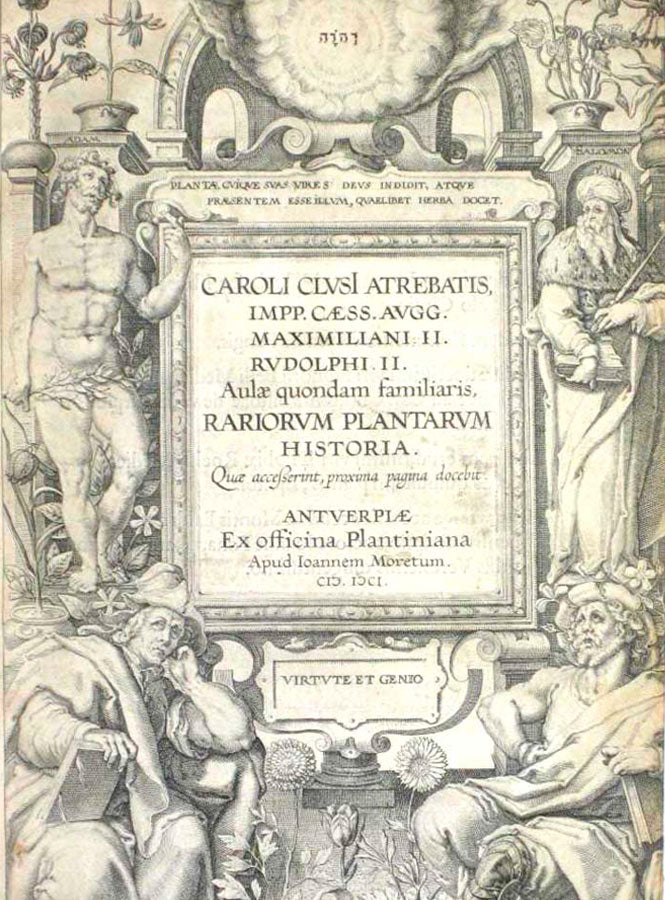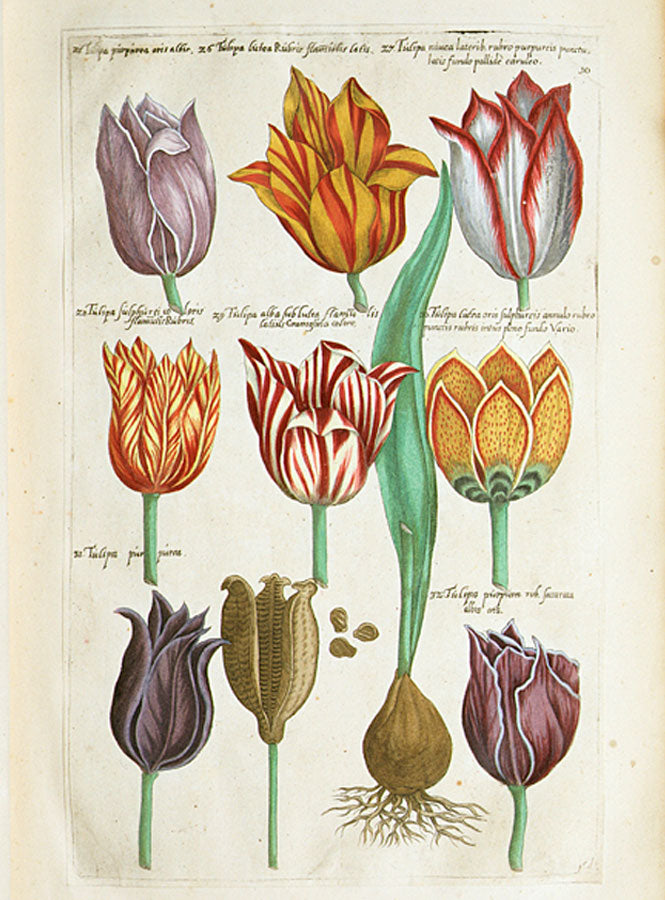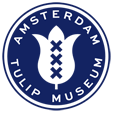Current Exhibit: Historical Botanical Texts
The Amsterdam Tulip Museum is home to two interactive exhibits featuring editions of important botanical books from the 1600s. The two volumes are the Rariorum Plantarum Historia, (History of Rare Plants) and Florilegium Amplissimum et Selectissimum (A Gathering of Flowers).
Rariorum Plantarum Historia was written by Carolus Clusius and published in Antwerp in 1601 by world-renowned Plantin Press. Florilegium Amplissimum et Selectissimum is by Emmanuel Sweert and was first published in Amsterdam in 1612. The museum’s edition was published in 1641. Both books were revolutionary in their day, offering the general public (and not just royal courts) a look at beautiful illustrations of botanical wonders brought to Europe by Age of Discovery explorers traveling to the far corners of the globe by sea and over land.
“People were voracious to learn about all things plant-related, as explorers returned from exotic lands with samples of flora, fauna and other natural treasures,” said historian and museum director Sjoerd van Eeden. “Botanists played critical roles in European expeditions seeking new trading routes, knowledge and wealth. By the early 1600s, the Dutch were well into the period historians call the Dutch Golden Age. It was a time when Dutch mastery of trade, science and the arts were the envy of the world, roughly spanning the century from 1575 to 1675."
The publications featured in the exhibits were acquired from private collectors through the firm Antiquariaat Junk in Amsterdam, a top specialist in rare antique natural history books. While similar editions can be found in the research libraries of leading universities and botanic gardens in Europe, the United States and elsewhere, here the exhibits offer visitors both context and an interactive experience.
Visitors to the Amsterdam Tulip Museum view the actual documents in a setting that vividly communicates their historic significance. Digital technology allows scrolling through each work, page by page. The two displays appear in an exhibit room devoted to Tulipmania—the period in the 1630s when wild financial speculation in flower bulbs drove the price of a single tulip bulb as high as that of a luxurious Amsterdam townhouse, before the market collapsed. The museum’s Tulipmania exhibit is among its most popular attractions.
“Both scientific knowledge and commercial gain motivated Western explorers in the Age of Discovery,” said van Eeden. “The works of Clusius (a scientific treatise) and Sweert (a trade catalogue) reflect that. The world for them was wondrous and so vast as to seem infinite. Four centuries later, the world seems to us a smaller and more finite place. Aren’t natural treasures all the more precious because of that?”

Rariorum Plantarum Historia
Rariorum Plantarum Historia is a two-volume work, circa 1601, by famed botanist Carolus Clusius (1524-1609). With 15 pages devoted to tulips, the book was the first Western monograph dedicated to the species. It was Clusius himself who first brought tulips to Holland in 1593, planting them in the Hortus Botanicus of the University of Leiden, where he’d just begun a professorship. Historians surmise that thieves climbed the walls of that garden to steal the bulbs that sparked Tulipmania.

Florilegium Amplissimum et Selectissimum
Florilegium Amplissimum et Selectissimum is considered the first horticultural sales catalogue in Europe. It features the offerings of Emmanuel Sweert (1552–1612), a Dutch painter and trader who sold seeds, tulip bulbs and natural curiosities such as sea shells and stuffed birds. Sweert introduced his catalogue in 1612 at the leading European horticultural trade fair, the Frankfurt Messe in Germany. It featured 560 unusual garden plants, nearly 60 percent of them bulb plants. With an introduction in Latin, French, German and Dutch, the catalog was clearly expected to attract international interest. Three pages are devoted to tulips. Illustrated in exquisite detail, the catalog became a bestseller that was reissued six times. The museum edition is from the 1641 printing.

